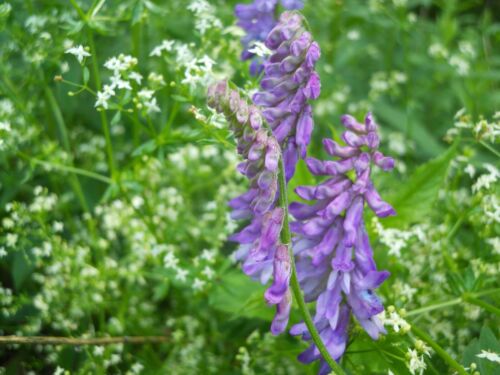Planting and Growing Hairy Vetch Using Traditional and Sustainable Techniques

Hairy Vetch Seed - Nitrogen-Fixing Cover Crop for Soil Improvement Green Manure | eBay
Find many great new & used options and get the best deals for Hairy Vetch Seed - Nitrogen-Fixing Cover Crop for Soil Improvement Green Manure at the best online prices at eBay! Free shipping for many products!

Introduction
- Hairy Vetch (Vicia villosa) is a versatile legume commonly used as a cover crop, green manure, or forage for livestock.
- This guide will provide detailed planting and growing instructions for both traditional and sustainable methods, including no-till, permaculture, and regenerative techniques.
- Instructions will take into account variations in growing locations and conditions.
Planting Instructions
Choose the right time
- For cooler climates (zones 4-6): Plant in late summer or early fall to establish before winter, or in early spring.
- For warmer climates (zones 7-9): Plant in fall or winter to take advantage of cooler temperatures.
- Optimal soil temperature for germination is between 40°F and 75°F (4°C - 24°C).
Select a suitable location
- Hairy Vetch thrives in full sun to partial shade.
- Plant in well-draining soil with a pH between 6.0-7.0 for optimal growth.
Prepare the soil (Traditional method)
- Remove weeds and grasses from the planting area.
- Till the soil to a depth of 4-6 inches (10-15 cm) and incorporate organic matter such as compost or aged manure.
Prepare the soil (No-till method)
- Mow or cut any existing vegetation as close to the ground as possible.
- Spread a layer of compost or aged manure (1-2 inches) over the planting area to provide nutrients and improve soil structure.
Sow the seeds
- Traditional method: Broadcast seeds evenly over the prepared area and lightly rake the soil to cover the seeds at a depth of ¼ to ½ inch (0.6-1.25 cm).
- No-till method: Use a seed injector or hand broadcasting to evenly distribute seeds at the same depth as the traditional method.
Water and maintain
- Keep the soil consistently moist, but not saturated, until germination occurs (usually within 7-14 days).
- Reduce watering frequency as the plants establish.
Growing Instructions
Incorporate permaculture and regenerative techniques
- Plant Hairy Vetch in a polyculture setting to promote biodiversity and soil health.
- Utilize swales, contour planting, and keyline design to maximize water retention and distribution.
- Encourage beneficial insects and wildlife to create a balanced ecosystem and natural pest control.
Fertilization
- Hairy Vetch is a nitrogen-fixing legume, so additional fertilization is generally not required.
- If soil fertility is low, utilize compost, aged manure, or organic fertilizers to maintain soil health and avoid chemical inputs.
Pest and disease management
- Monitor for pests such as aphids, and diseases like powdery mildew or root rot.
- Practice proper sanitation and ensure good air circulation to reduce disease pressure.
Irrigation
- Established Hairy Vetch plants are drought-tolerant but will benefit from supplemental irrigation during extended dry periods.
- Utilize water-saving techniques like drip irrigation, rainwater catchment, or mulching to conserve water resources.
Weed control
- Traditional method: Employ mechanical cultivation or chemical herbicides to manage weeds.
- Sustainable method: Use mulching, cover cropping, or hand weeding to suppress weed growth and minimize soil disturbance.
Harvesting and termination
- Hairy Vetch can be terminated at different stages depending on its intended use:
- For green manure: Mow or till the plants into the soil when they start flowering (usually 3-4 months after planting) to provide the maximum nitrogen boost to the soil.
- For cover cropping: Allow the plants to grow until they reach full bloom, then mow or roll the vetch to create a dense mulch layer that will suppress weeds and conserve soil moisture.
- For forage: Harvest when the plants are in full bloom, either by grazing or cutting for hay.
Seed saving and storage
- If you wish to save seeds for future planting, allow the vetch to mature and produce seed pods.
- Harvest the seed pods when they turn brown and dry, and then remove the seeds by threshing.
- Store the seeds in a cool, dark place in an airtight container until needed.
By following these detailed planting and growing instructions for both traditional and sustainable methods, you can successfully cultivate Hairy Vetch in various growing zones, providing numerous benefits such as soil improvement, weed suppression, and livestock forage. Incorporating no-till, permaculture, and regenerative techniques will not only promote a healthy and productive crop but also contribute to a more environmentally friendly and sustainable agricultural system.
